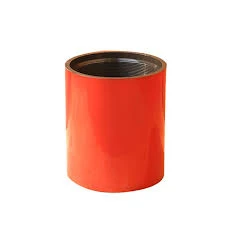- Afrikaans
- Albanian
- Amharic
- Arabic
- Armenian
- Azerbaijani
- Basque
- Belarusian
- Bengali
- Bosnian
- Bulgarian
- Catalan
- Cebuano
- Corsican
- Croatian
- Czech
- Danish
- Dutch
- English
- Esperanto
- Estonian
- Finnish
- French
- Frisian
- Galician
- Georgian
- German
- Greek
- Gujarati
- Haitian Creole
- hausa
- hawaiian
- Hebrew
- Hindi
- Miao
- Hungarian
- Icelandic
- igbo
- Indonesian
- irish
- Italian
- Japanese
- Javanese
- Kannada
- kazakh
- Khmer
- Rwandese
- Korean
- Kurdish
- Kyrgyz
- Lao
- Latin
- Latvian
- Lithuanian
- Luxembourgish
- Macedonian
- Malgashi
- Malay
- Malayalam
- Maltese
- Maori
- Marathi
- Mongolian
- Myanmar
- Nepali
- Norwegian
- Norwegian
- Occitan
- Pashto
- Persian
- Polish
- Portuguese
- Punjabi
- Romanian
- Russian
- Samoan
- Scottish Gaelic
- Serbian
- Sesotho
- Shona
- Sindhi
- Sinhala
- Slovak
- Slovenian
- Somali
- Spanish
- Sundanese
- Swahili
- Swedish
- Tagalog
- Tajik
- Tamil
- Tatar
- Telugu
- Thai
- Turkish
- Turkmen
- Ukrainian
- Urdu
- Uighur
- Uzbek
- Vietnamese
- Welsh
- Bantu
- Yiddish
- Yoruba
- Zulu
Exploring the Impact of Crossover Percentage on Pup Joint Performance and Reliability
Understanding Crossover Pup Joint An Overview
The crossover pup joint is a critical component in the field of drilling and wellbore interventions. It serves as a versatile tool that connects different sections of drill pipe while allowing for changes in direction and pressure. This article will explore the significance of the crossover pup joint, its applications, design features, and its impact on the efficiency and safety of drilling operations.
What is a Crossover Pup Joint?
A crossover pup joint is a short length of pipe used in the oil and gas industry to bridge two dissimilar pipe sizes or types during drilling operations. Its primary function is to facilitate the transition between different sections of drill string, such as from a larger drill pipe to a smaller drill pipe or connecting various types of casing. The pup joint is designed to ensure that the flow of drilling fluids remains consistent, and it minimizes the potential for leaks or blowouts.
Key Applications
Crossover pup joints are widely used in several applications within the drilling and oil extraction processes
1. Drilling Operations During drilling, operators often need to adjust the diameter of the drill string to accommodate various drilling conditions. Crossover pup joints allow for smooth transitions between drill pipe sizes, which is essential for drilling efficiently through different geological formations.
2. Well Completion After drilling is completed, the well needs to be equipped with casing and cementing. Crossover pup joints help connect different casing sizes, which can vary depending on the well's design and depth.
3. Intervention Operations In workover operations, where well maintenance or repair is needed, crossover pup joints are used to connect to the existing equipment without the need for complete replacement. This not only saves time but also reduces costs associated with well interventions.
Design Features
crossover pup joint

Crossover pup joints are engineered with several important features that enhance their performance
- Material Composition The joints are constructed from high-strength steel or other composite materials that can withstand the extreme pressure and temperature conditions often encountered in drilling operations. The material choice is crucial for maintaining structural integrity and durability.
- Threading and Connections Different types of threading (like API or premium threads) can be utilized on pup joints to ensure a secure and leak-tight connection between sections of pipe. The design of the threads is essential to withstand the forces encountered during drilling.
- Length and Size Variations Crossover pup joints can come in various lengths and sizes to cater to specific drilling needs. Customization ensures that operators have the right tool for unique well configurations.
Impact on Efficiency and Safety
The use of crossover pup joints in drilling operations has a profound impact on both efficiency and safety
- Efficiency By allowing for quick and seamless transitions between different sections of the drill string, crossover pup joints minimize downtime and help maintain a steady drilling pace. This translates to reduced operational costs and faster project completion times.
- Safety Safety is paramount in drilling operations. Crossover pup joints are designed to prevent leaks and withstand high pressures, which are critical in avoiding catastrophic failures during drilling. Proper use and maintenance of these joints contribute to a safer working environment for operators.
Conclusion
In conclusion, the crossover pup joint is an essential component in modern drilling operations. Its ability to facilitate effective transitions between various pipe sizes ensures efficiency and safety in an industry that constantly faces challenges related to pressure and material integrity. As technology advances and drilling techniques evolve, the design and application of crossover pup joints will continue to play a vital role in the successful extraction of oil and gas resources. Understanding and utilizing this tool effectively can significantly enhance operational outcomes and contribute to the sustainability of drilling practices.
-
Tubing Pup Joints: Essential Components for Oil and Gas OperationsNewsJul.10,2025
-
Pup Joints: Essential Components for Reliable Drilling OperationsNewsJul.10,2025
-
Pipe Couplings: Connecting Your World EfficientlyNewsJul.10,2025
-
Mastering Oilfield Operations with Quality Tubing and CasingNewsJul.10,2025
-
High-Quality Casing Couplings for Every NeedNewsJul.10,2025
-
Boost Your Drilling Efficiency with Premium Crossover Tools & Seating NipplesNewsJul.10,2025







